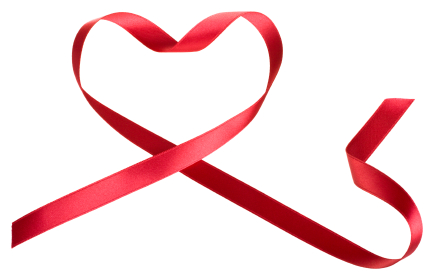Menopause, an occupational hazard?
Two years ago, I wrote about a UK-based study examining the challenges that women face while working through the transition. Among working women surveyed, a majority reported that the primary factors affecting their ability to function in their job were menopausal-related fatigue and insomnia. During an email exchange, the study’s author noted that “evidence suggests that some women do experience a lot of difficulty – largely tiredness – much of which can be resolved with sensible line management and flexible work. ” However, “as with any other long-term health condition, employees should feel empowered to discuss health conditions with their line manager/supervisor, otherwise the latter are not in a position to help.” Not soon after, I wrote about a study examining how menopause affects occupational health specifically, with study findings showing that total work ability scores declined by almost a half a point for every one point on the total symptoms scale score.
Importantly, these results have finally been published and appear in the March issue of Menopause.
Let’s step back a moment.
If you are unfamiliar with the term “work ability,” it refers to a concept “built upon the balance between a person’s resources and her work demands” and can be used to “predict future impairment and duration of sickness absence.” Within the confines of this definition, it’s no surprise that by and large, women have higher raters of sickness absence than men; just look at the multitasker caretakers in your own circle of friends! Moreover, women that are in the age range most commonly associated with perimenopause and menopause, i.e. 44 to 60, also reportedly have the highest incidence of absence from work, begging the question, is menopause playing a role?
In case you missed the first post on this study, women were asked questions about individual and lifestyle factors that might influence work ability, e.g. BMI, physical activity, smoking status and education. Additionally, menopausal symptoms were measured and analyzed using a scientific scale, and a tool – the Work Ability Index – was employed to evaluate how well the 208 women participating in the study were able to currently perform work. The latter tool focused on work ability compared to best of a lifetime or current demands, impairment due to illness, how often they took sick days over a year’s time and what life was like in general, both at work and at home.
Overall, menopausal symptoms were negatively associated with work ability, in particular, physical symptoms (body aches, joint pain, numbness, feeling dizzy/faint), psychological effects (irritability, feeling blue, anxiety, depression) and education level. Moreover, both physical and psychological symptoms accounted for as much as 36.5% of the different results in work ability among women. Yet, vasomotor symptoms — hot flashes and night sweats — appeared to have little influence on the ability to work, most likely because in this particular set of women, vasomotor symptoms were reported as existing but not (yet) bothersome.
What was lacking in this particular assessment were women who worked outside health and social service industries, who might be engaged in jobs that are less strenuous and physically challenging. Indeed, even in the earlier study, the women were mostly civil servants, i.e. police officers. The researchers note that the group of women they followed may have also had easier access to self help and lifestyle interventions because of their occupational backgrounds, which could have also influenced outcomes. Still, it seems that on some level, symptoms influence work ability and contribute to absence from work. More troubling is the fact that it is well known that women who work appear to have better menopause quality of life.
In essence, we define ourselves, at least in part, by our work. And when we suffer, our work suffers. How do we bridge the gap between work, life and demands of the transition if those demands impact our quality of life in ways that we might not have previously considered? I don’t have any answers. Do you?
Read More
Wednesday Bubble: Got Steam?
This one’s a doozie and I knew when I saw it that it was Bubble material!
Vaginal steam. Have you heard of it?
This 600-year old Korean remedy better known as “chai-yok” is suddenly taking hold in spas in the West. The practice, which entails an infusion of 15 or so herbs into a pot of water, over which a woman sits on an open seated stool, is believed to maintain uterine health, rid the body of toxins and even promote fertility. The two primary herbs in the concoction are mugwort, a perennial that is part of the daisy family, believed to have antifungal and antibacterial properties and is often used herbally for menopausal and menstrual complaints, and wormwood (the key ingredient in absinthe), which is often used to detoxify and in some circles, is believed to quicken childbirth.
Mind you, there is nothing wrong with the beneficial effects of steam; when was the last time, for example, that you took a steam bath? Nevertheless, despite anecdotal evidence to the contrary, there is nothing to suggest that steaming the va jay jay is going to yield much benefit beyond cleansing, improving circulation and an overall good feeling (if that’s your thing).
And there’s even a DIY home kit with an open stool available for a mere $330.
Hmmm.
Got steam?!!
Read More
No time like a present: heart disease, metabolic syndrome and weight
Want to give yourself the gift of a lifetime? Aim for a healthy weight before you hit menopause.
We’ve discussed it time and again on Flashfree; weight gain and menopause go hand in hand like a horse and carriage. And with that weight gains comes an increased risk for developing heart disease, diabetes and the dreaded metabolic syndrome. However, researchers from the University of Ottawa are reporting that entering full menopause with a healthy body mass index (BMI) actually confers protection.
In the study (which appeared online a few weeks ago in the journal Menopause), researchers evaluated and observed 102 premenopausal women for body composition and changes in their cardiovascular health profiles. The women, all of whom were between 47 and 55 years of age, did not smoke, had a BMI between 20 and 29 and had had a stable weight for at least 6 months before the study started, were followed for five years. Each year, the researchers gauged if they had entered menopause, measured body composition (i.e. total fat mass, trunk fat mass and total fat free mass), waist size, the degree of abdominal fat and took blood to examine glucose, insulin and blood fat levels.
The study’s lead researcher, Dr. Denis Prud-homme explains that by simply observing the women and not imposing any structured interventions (e.g. diet or exercise) they were able to assess changes within a more naturalistic environment. At the study’s end, they discovered that despite significant increases in fat mass, visceral abdominal fat, blood glucose and cholesterol levels, most of which were the natural result of hormone fluctuations and aging, the women did not appear to have any declines in their heart or metabolic profiles that would indicate an increased risk for disease. Dr. Prud-homme says that a possible explanation might be that “even if the area of visceral fat is increased, it is still under the critical threshold associated with cardio-metabolic deterioration.” In other words, by maintaing a healthy lifestyle and BMI premenopausally, these women were able to change their risk equations once they fully entered menopause.
The bottom line is that the present you give yourself now will last long into your later years. Exercise. Eat right. And pay attention to your health.
No time like the present. For a present. Give yourself one.
Read MoreThe gender divide: women’s healthcare in crisis
This one’s a hot button that keeps getting worse. And yet, there is no war on women’s healthcare. Right?!
This past Monday, the New York Times ran a piece on gender disparities in health insurance costs. The practice, also known as the “gender rating,” is acknowledged by insurers across the nation, who charge women more than men, theoretically because data demonstrate that women use healthcare services, including doctor visit and prescription drugs more than men and have a greater prevalence of chronic illnesses. Quoting Marcia Greenberger, president of the National Women’s Law Center, reporter Robert Pear writes that these disparities are questionable because they vary from insurer to insurer: “In Arkansas for example, one health plan charges 25-year-old women 81% more than men while a similar plan in the same state charges only 10% more.”
If passed, the new health care law will theoretically prevent the ‘gender rating.’ But meanwhile? According to a newly released study conducted by Medco Health Solutions and the Society for Women’s Health Research, another gender divide exists: while women use more prescription drugs than men, they are significantly less likely to be prescribed those drugs in alignment with clinical guidelines. The distinction is apparently most critical and dramatic among individuals suffering from heart disease and diabetes, where on average, women demonstrated poorer outcomes than men in 100% (25 of 25) of clinical measures. The result is that women tend not to adhere to medication as directed, and may discontinue medications shortly after starting them, possibly due to side effects, tolerance issues or unreasonable expectations about outcomes. According to the study authors, some of the reasons for the inadequate response to medication may be that women are often prescribed drugs and drug regimens (dosing etc) based on data from men.
The study, which was based on claims data from over 3o million Americans over a 12 month period in 2010, demonstrates that women particularly fall short in their use of blood glucose testing, use of cholesterol lowering medication and use of beta blockers after a heart attack. And despite recent news that would lead one to believe otherwise, use of contraceptives accounted for only 4.5% of chronic medication use, implying that where women are falling short is not only with regards to their reproductive healthcare but with regard to equally if not more critical care.
Leadership from both Medco Women’s Health and the Society note the need to pay consider the gender gap early in the drug development process so that future disparities can be avoided. But with this latest dataset, it is becoming even more apparent that we are facing imminently greater challenges when it comes to women’s health. Not only are we paying more for services but the service we are receiving is subpar.
How can we solve this crisis if the crisis is coming from within the system itself?
Gotta wonder.
Read More
Wednesday Bubble: Coregasm?
I ran across an article earlier in the week referencing a new study demonstrating a link between exercise and orgasm. And thought: “hold on.” Yet, a deeper dive into the topic demonstrates that it might very well be true, at least for some women. And while I admit that I am not a fan of the term “coregasm,” I could very easily become a fan of sexual arousal or pleasure during exercise; the premise intrigues me as I start to wonder if there is a way to combat aging issues of sexual desire/dysfunction through certain workouts.
Anyone for an “Exercise-O?” But I digress…
Researchers from the famous Kinsey Sex Institute at the University of Indiana in Bloomington write that “orgasms that occur outside of explicitly “sexual” contexts have received much less attention in sexuality research,” and are considered “anomalies, even pathological.” One such non-sexual behavior is apparently physical exercise, noting that “in recent years, popular magazines and Internet blogs have described exercise-induced orgasms, frequently identifying them as ‘coregasms’ due to the association between the type of exercise, i.e. those that work on the core, and orgasm.” However, they also say, gratefully, that this terminology might be incorrect due to a lack of evidence linking orgasm to core muscle activity.
So, why is this important anyhow (besides the obvious)?
Orgasm is incompletely understood and for women in particular, it’s often linked to a variety of factors, including sexual arousal, environment, life stressors, partner intimacy and caring and of course, lubrication. And, in my research I’ve discovered that for some women who experience exercise-related orgasm, they may start very early before they participate in sexual activity with a partner, necessitating counseling and assistance in transferring the ability from sports to a human, if you will. Moreover, as the researchers say, given the attempts to enhance sexual arousal, perhaps this research can start to shed some light.
Consequently, they surveyed 530 women between the ages of 18 and 56 who reported experiencing exercise-induced orgasm or exercise-induced sexual pleasure (i.e. coming close to orgasm during exercise) via email messages. The results, which were published last November in Sexual and Relationship Therapy are intriguing:
- 40% or more of women reported having had experienced exercise induced orgasm or sexual pleasure during exercise 11 or more times in their lifetime
- Almost 44% said that the first time it happened, it was during abdominal exercises, and over 50% reported having an orgasm during situps or crunches within the past three months. Other types of exercise that appeared to spur on recent orgasm included weight lifting (26.5%), yoga (20%), biking or spinning (15.9%), swimming or water aerobics (17.9%), running (13.2%) and walking or hiking (9.6%)
- Many of these same exercises were reported by women who experienced sexual pleasure, including biking/spinning, sit ups/crunches, lifting weights and yoga.
So, how do women feel about these experiences? Apparently, most say that while they are happy about these experiences, those who actually experience orgasm while exercising also express feeling embarassed or self conscious, fearing discovery by others if they vocalize their pleasure. Two women* I spoke to told me that if they are alone, they rarely do anything to stop it although they do control any overt visible displays. In public, they let it go on for as long as they can without losing ‘control’ and then deliberately redirect attention to the exercise. In fact, in the study, at least a third of women in the survey in either group reported that they could control their experience.
Women who orgasm during physical activity also say that it occurs without sexual fantasies, which suggests that perhaps there is a component of orgasm that is totally unrelated to sex. Yet, there are some women who associated sexual thoughts first, noting that they are very aware how many reps or time spent exercising will bring on an orgasm.This begs the chicken/egg question: does pleasure while exercise beget adjustment of thinking beget orgasm? Moreover, some women reported being motivated to exercise to reach orgasm or experience sexual pleasure, which takes away the spontaneous aspect of any hypothesis.
Regardless, the two women I spoke with in my side research shared some advice for those of who are fortunate enough to have experienced this. If you’re new to the exercise-O, game, Natalie offers this: “it takes a bit of self-control so in the beginning, you have to figure out what’s happening (“is this what I think it is?!”), acknowledge it and then purposefully redirect your attention to your surroundings.” For the more experienced, Ashley said that women should enjoy it. “You are lucky. Once you recognize what’s happening, enjoy it until you reach that point where you NEED to vocalize or publicly display your experience.” At that point, she adds, “I highly advise a quick “oh, I’ll save it for later…” and similar to Natalie’s advice, she says to redirect your thoughts.
Ironically, both women caution that if you are exercise-O prone, to stay away from moving objects, such as biking on the street or skiing, noting that the obvious: the moment it might take to calm your parts can mean an serious accident!
The researchers caution that more study is needed, especially since women were recruited online and that there was no quality measurement tool with which to gauge questions and answers. They also say that future research might want to focus on men’s experiences with exercise induced orgasm and sexual pleasure. Moreover, the triggers of either are still unknown. Still, the fact that I was able to quickly find two women who have experienced this phenomenon tells me that there are likely a lot more out there.
I’m intrigued. This could open up an entire new world. And I would love to see more of these types of studies done in women 50 and older. Until then? I prefer the term exercise-O over coregasm. But that’s just me. And this bubble ain’t burst. How refreshing!
*Names changed to protect identities.
Read More











